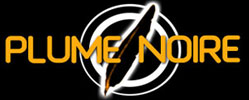
|
|
Gian Maria Volonte is El Chuncho, a colorful train robber who supplies the Mexican revolution with weapons and ammunition and whose improbable friendship with a young American dandy (Lou Castel) will have unexpected consequences. Contrary to other Italian productions, A Bullet for the General is a high-scale film. In addition to the grandiose settings reminiscent of Leone's trilogy (it was shot in the same location in Spain), the use of Technicolor offers the audience a festival of colors, particularly in the Mexican villages where white walls contrast with colored gates and shutters. Damiani's direction (Trinity Is Back Again and Amityville II) emphasizes the psychology of the characters to establish the mechanisms of manipulation, but spices the ensemble with spectacular action scenes that don't allow the film to lose rhythm during its two hours. But it is especially the political dimension that prevails in A Bullet for the General. While the inclinations of the director are obvious, we especially owe the screenwriter the ideological ends of the film. Franco Solinas, a convinced communist partisan, built his reputation on a series of politically charged scenarios that include Costa-Gavras' State of Siege, The Battle of Algiers and Mr. Klein. The man also authored two other political westerns: A Professional Gun—the second chapter of Corbucci's trilogy starring Django's Franco Nero and precursor of Companeros—and Tepepa... Viva Revolución with Toma Milian and Orson Welles. In A Bullet for the General, Solinas directly attacks the American western and, through it, United States policy. Thus El Chuncho, the poor idealistic Mexican, is the opposite of manipulator Bill Tate. El Chuncho is equipped with a drum, a symbol of protest often used in communist cinema. It is difficult not to see in the opposition between the two characters a double-edge allegory. At the cinematic level, the poor, dirty and twisted El Chuncho symbolizes spaghetti western while the rich and angelic American—Tate is called El Niño for his young age and only wears white—is the reflection of the proper and commercial American western. At the ideological level, El Chuncho represents poor countries as prey to undercover American manipulations. Placing the film in the context of the epoch, it is clear that it denounces the schemes of the United States throughout Latin America. A topic of predilection for the screenwriter, further confirmed knowing that State of Siege deals with the kidnapping of a CIA agent in Uruguay in the Seventies. The film also refers to homosexuality. A strange bond seems to link El Chuncho to El Niño, two men opposed by everything. Although arousing the interest of beautiful revolutionary Adelita (Martine Beswick), El Niño approaches her only when he needs to manipulate her. This attraction between the two men reveals on one hand the fascination of the developing world for capitalist success and on the other hand the will of the United States to help—allied with pity. Another important character, El Santo (El Chuncho's brother) interpreted with astonishing reserve by Klaus Kinsi , personalizes the working class priests. The acting, less outrageous than in other films of the genre, brings even more seriousness to the ensemble. If one compares A Bullet for the General to other political westerns like Companeros and Once upon a time a Revolution, one notes that Damiani's film is more cynical and marks its engagement without concessions. In the hands of Damiani and Solinas, A Bullet for the General becomes an ideological weapon as explosive as El Chuncho's dynamite.
|
|

